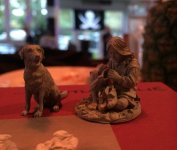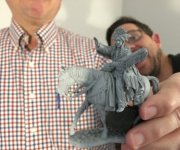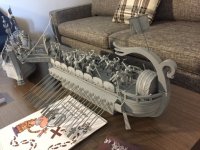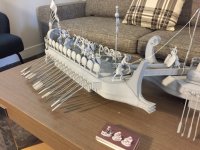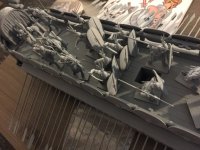- Joined
- Feb 2, 2011
- Messages
- 2,357
Are we feeling up to another stop???
I was out looking for a bag of nickels....and lo and behold I found Nick from Crown Miniatures room!
He was luckily able to berth the flood with his JJD prototype.
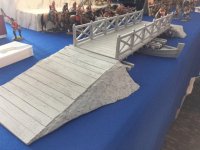
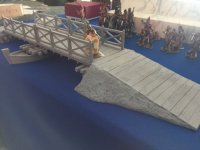

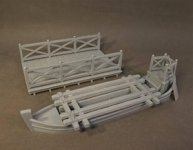
Another diorama item for collectors of the Roman era.
In 2017 the Roman Fort was presented by Nick at the Chicago Treasure Hunt, and this year he will be displaying the next diorama item for the Armies and Enemies of Rome series.
Roman-designed pontoon bridges, constructed mostly during wartime for the shock and awe of quick raids, and were a specialty of Julius Caesar's.
In 55 B.C., he built a pontoon bridge that was around 437 yards (400 meters) long to cross the Rhine river, which was traditionally thought by the Germanic tribes to be safely out of reach of Roman power.
Roman leader Caligula is well-known for his brief stint as the emperor of Rome, from 37 AD through 41 AD. Some say that Caligula displayed signs of madness during his reign. According to historical accounts, one of these displays of madness was Caligula’s demand for the construction of a floating bridge across the Bay of Baiae so that he could ride triumphantly across it. Some historians dispute the building of this bridge. With differing accounts of exactly what happened during Caligula’s reign as emperor, we may never know whether the floating bridge of Baiae was actually constructed, but it remains a lasting story of power, madness, and what happens when the two intertwine.
Please note that of course, additional sections can be purchased to make the Pontoon bridge longer.
Availability should be early 2019.
What is a Pontoon?
Guesses Guesses Guesses.......
I was out looking for a bag of nickels....and lo and behold I found Nick from Crown Miniatures room!
He was luckily able to berth the flood with his JJD prototype.




Another diorama item for collectors of the Roman era.
In 2017 the Roman Fort was presented by Nick at the Chicago Treasure Hunt, and this year he will be displaying the next diorama item for the Armies and Enemies of Rome series.
Roman-designed pontoon bridges, constructed mostly during wartime for the shock and awe of quick raids, and were a specialty of Julius Caesar's.
In 55 B.C., he built a pontoon bridge that was around 437 yards (400 meters) long to cross the Rhine river, which was traditionally thought by the Germanic tribes to be safely out of reach of Roman power.
Roman leader Caligula is well-known for his brief stint as the emperor of Rome, from 37 AD through 41 AD. Some say that Caligula displayed signs of madness during his reign. According to historical accounts, one of these displays of madness was Caligula’s demand for the construction of a floating bridge across the Bay of Baiae so that he could ride triumphantly across it. Some historians dispute the building of this bridge. With differing accounts of exactly what happened during Caligula’s reign as emperor, we may never know whether the floating bridge of Baiae was actually constructed, but it remains a lasting story of power, madness, and what happens when the two intertwine.
Please note that of course, additional sections can be purchased to make the Pontoon bridge longer.
Availability should be early 2019.
What is a Pontoon?
- A Flat Bottomed Boat
- A British Card Game
- An Ancient Roman Sport
Guesses Guesses Guesses.......


